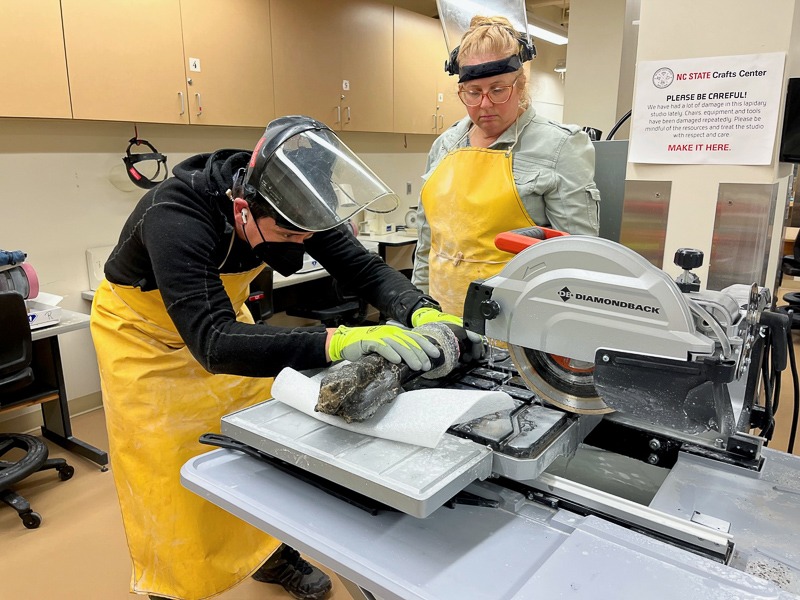It’s what’s inside that counts
For immediate release ‐ May 28, 2024
Paleontology
Contact: Jon Pishney, 919.244.7913. Images available upon request
 SECU DinoLab Manager Eric Lund prepares to saw through the tyrannosaur femur. Photo courtesy of NCSU.
SECU DinoLab Manager Eric Lund prepares to saw through the tyrannosaur femur. Photo courtesy of NCSU.
One of our research questions concerning the Dueling Dinosaurs is the age of the dinosaurs when they died. For our tyrannosaur, is it small because it is young or because it is an adult of a smaller species? Since the dinosaurs aren’t found with a driver’s license, we have to turn to their bones to find out.
Luckily, the limb bones of dinosaurs preserve a record of the growth of the animal. Lines analogous to tree rings are seen throughout the bone and represent periods of the animal’s life where growth either stopped or slowed down. Like the rings of a tree, we can count these Cyclical Growth Markers (CGMs) to get a rough estimation of age at time of death.
To view these CGMs in our tyrannosaur, the Dueling Dinosaurs team had to first remove the exposed femur (upper leg bone) from the main block. The femur was cleaned and 3D scanned to keep a record of the intact bone. Just to be safe, our paleontologists also took a mold of the fossil, which we can use to make “casts,” or exact copies.
Once all the 3D data was collected, it was time to get it ready for the saw. A cuff of epoxy was made around the bone to keep it stable while it was cut. Then we took the femur on a road trip to the North Carolina State University Craft Center, where it was cut on one of their large tile saws.
Once cut, the bone was polished, attached to a large slide, and then polished all the way down until light could pass through and we could look at the fine microstructures under the microscope. Now it’s up to our paleontologists to count the rings, look at the types of bone tissues present, and make the call if our tyrannosaur is young or just small.
For more information about our upcoming activities, conservation news and groundbreaking research, follow @NaturalSciences on Instagram and Facebook.

